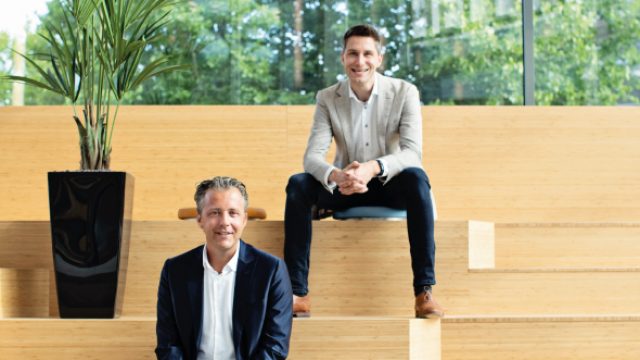At Sound of Data we are convinced it does. Bas Berkemeijer, Managing Partner: “The danger of increased digitizing is that the human component like tone of voice, empathy and engagement are pushed aside. Customers want to be helped, preferably 24×7, quickly and easily by, for example, self-service, (chat)bots, etc. If this is not available or not easily accessible, personal voice contact is indispensable. After all, products and services are becoming more and more complex and so are customer questions. And then human interaction is necessary. We can also see this in the call volumes of our customers. There is still an ongoing upward trend.”
The world is digitizing, and so is customer service. Channels like email, social, chat and bots all happen online. Easy and fast when it comes to simple and non-urgent questions. But as soon as it becomes complicated or urgent, 34% of consumers* still reach for the telephone. Why? Time to resolution and the human touch, things that are harder to get across in digital channels. But is there still a future for voice calls with these rapidly developing digital channels?

F.l.t.r. Tim de Groot (Kaspersky) and Gerard Nijboer (Sound of Data). Photo: Zuiver Beeld, Customer First Buyers' Guide 2020-2021
Products and services are becoming more complex
Telephone is offline
A downside of voice calls according to many marketeers is that it is an offline channel. You can create beautiful online journeys, but as soon as website visitors reach for the telephone, they are out of sight. Also, things like customer satisfaction and return on investment are harder to measure because surveys are sent through different channels (with low attention value as a result) and you can’t always link a conversation directly to a sale. There must be another way, we felt at Sound of Data.
Embed telephony in the online journey
Gerard Nijboer, Product Manager at Sound of Data explains: “With Talk you give website visitors the possibility to directly call customer service with the click of a button on your website: Click-to-call. The visitor doesn’t have to search for a telephone number and can call directly in the browser. This embeds the conversation in the online journey, allowing the company to follow the visitor and increase engagement and conversion. For example, you can make a visitor an offer while in the queue or at the end of the call, send them to a landing page or show a short survey. This is not possible with a regular call. Talk is based on WebRTC. It is a VoIP call and it is forwarded to the call center via our voice platform in the same way as regular calls. For contact center agents there is no difference.”
Maximize your conversion rate
Kaspersky is one of the companies that is currently actively using Talk on their website. Tim de Groot was immediately interested when he heard about it through his colleague at Customer Service. As Head of E-Commerce Benelux & Nordics, Tim wants to keep customers in the online customer journey as long as possible and maximize the conversion rate. “In the E-Commerce department, we also look at customer service from a commercial point of view. Consequently, customer satisfaction is super important. If customers feel protected, they remain customers and don’t quickly switch to competitors.”
Telephony remains a popular channel
Kaspersky is one of the fastest growing companies in cyber security and active in 200 countries. Given the nature of the business and the large number of customers, customer contact plays a major role in the organization. Tim: “Consumers and companies can come to us for technical advice as well as questions about orders, installation and support. Together with a few external call centers, we serve the various target groups. Technical topics are more difficult to explain in text than in speech. We also notice that especially the older generation wants to call, they are used to that. The younger generation is different. But even then, when something gets really complicated, they too eventually pick up the phone. It simply solves their issue faster.”
Easy to implement
Kaspersky started with Talk for a pilot of 3 months. The implementation is simple because it’s basically just adding a button to the website. From that button, the visitor is directed to a page that fully meets Kaspersky’s look-and-feel and where the real conversation starts. Tim was happy with the implementation: “For Sound of Data it was less work than for us. This was mainly due to our internal process of getting approval to implement Talk on the website. That can’t be done just like that. Talk fully complies with our security requirements, which is why the approval was granted.”
Customer service from money taker to money-maker
The first results show that users return to the website after a conversation and continue their online journey. A special offer on the landing page leads to more filled shopping baskets. The ultimate goal, of course, is more online conversion and turnover. “After a successful call, customers end up on a landing page with a special offer. That’s not possible with a regular phone call and that’s why this tool is so interesting for us. Customer service is often seen as a money taker. The costs are very easy to measure but measuring the value is more difficult. I am convinced that we can turn customer service into a money-maker by using a tool like Talk because we can measure how telephony contributes to online conversion. I can’t think of a nicer mix of customer contact, sales, and marketing.”
* Research Microsoft 2019
This article was originally published in Dutch in the print edition of the Customer Service Buyers’ Guide 2020-2021.
Want to hear Tim tell the story himself and ask questions?
Check out our on demand webinar where Tim shares Kaspersky’s experience with Talk.
Read more and sign up